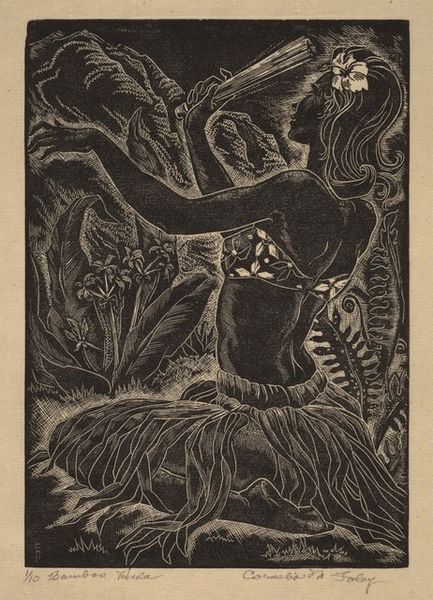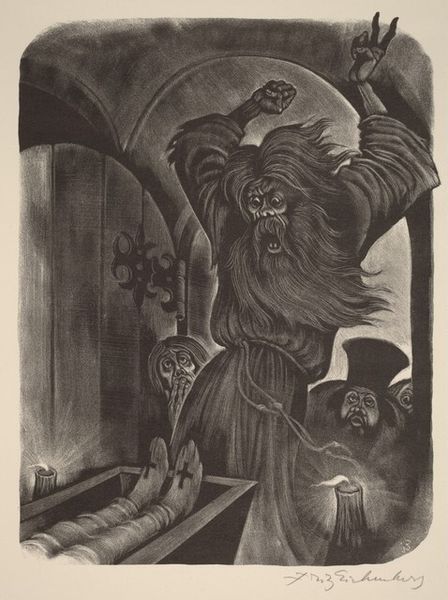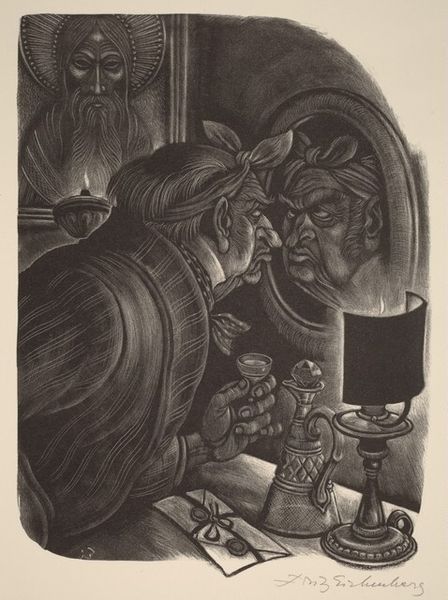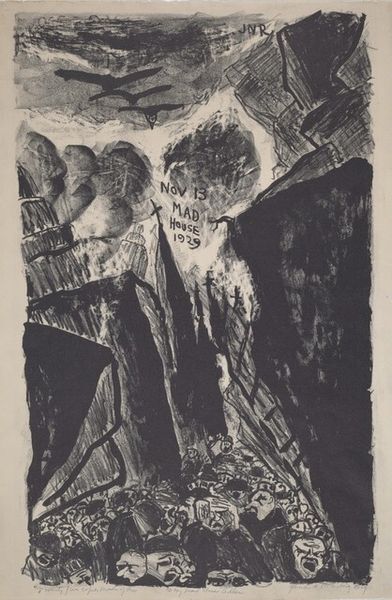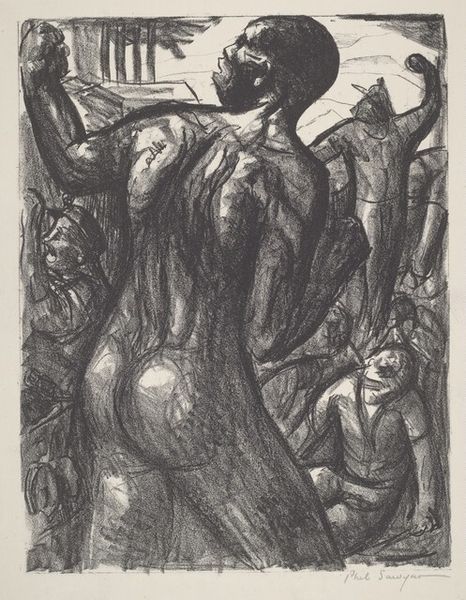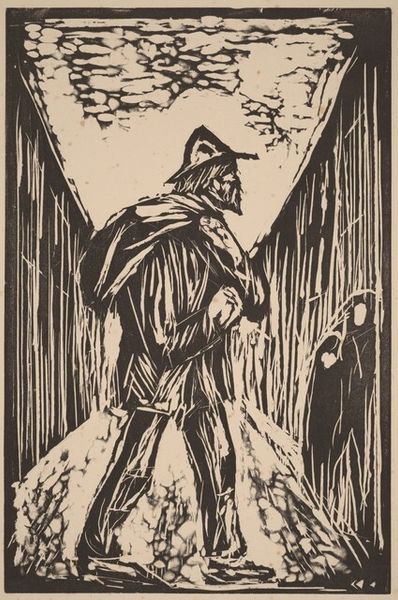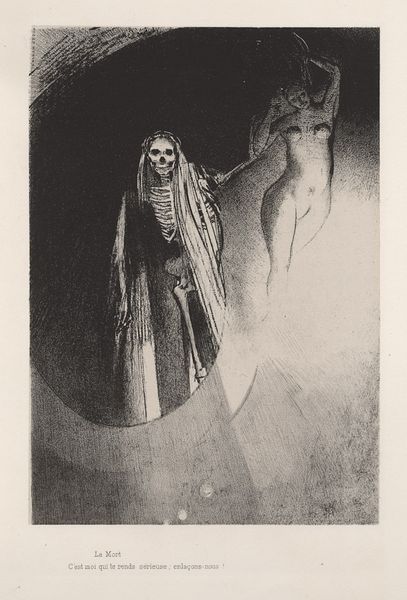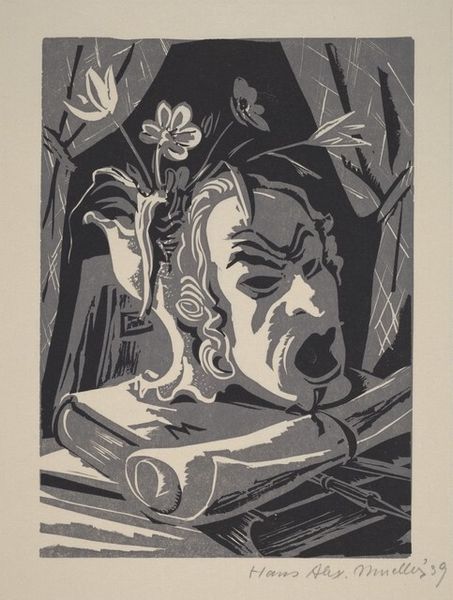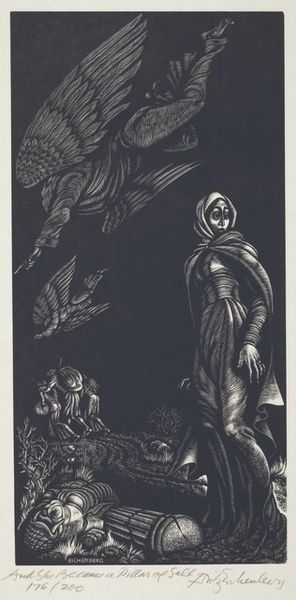
drawing, print, paper, ink, graphite, pen
#
portrait
#
drawing
# print
#
paper
#
portrait reference
#
ink
#
pencil drawing
#
graphite
#
pen
#
portrait drawing
Copyright: National Gallery of Art: CC0 1.0
Editor: This ink and graphite drawing, “Father Ferapont,” created in 1949 by Fritz Eichenberg… it's unsettling. The sharp lines and shadowy figures give it a really intense, almost disturbing, feeling. What's your take on it? What do you see in this piece? Curator: Unsettling is spot on. The brilliance of Eichenberg lies, perhaps, in capturing that edge where devotion meets something darker, something bordering on madness. Look at Ferapont's eyes – or rather, the abyss where his eyes should be. And consider, if you will, the setting: gnarled trees like skeletal fingers reaching down. The image almost feels haunted. Does it speak to you about something beyond just religious iconography? Editor: It makes me think about blind faith and the dangers of extreme beliefs. The other figure, maybe a priest, looks like he's almost pleading, while Ferapont is completely lost in his own world. Curator: Precisely! Eichenberg wasn't just illustrating a scene, he was posing a question, perhaps even a warning. Think about the time it was created, post-World War II, a world wrestling with the consequences of ideology. Isn’t it striking how relevant that is today? The fine line between conviction and fanaticism is a theme that seems to recur throughout history, and Eichenberg masterfully captured that tension. And I wonder, doesn't the darkness seem to whisper a question in your ear? Editor: Definitely! I initially just saw a dark drawing, but now I see how it reflects on faith and history, too. It’s kind of amazing how much is packed into one image. Curator: Art has a habit of doing that, doesn't it? Burrowing its way into our minds, demanding we consider the world – and ourselves – a little differently. Perhaps now it might keep you up tonight, or whisper some secret thoughts?
Comments
No comments
Be the first to comment and join the conversation on the ultimate creative platform.


